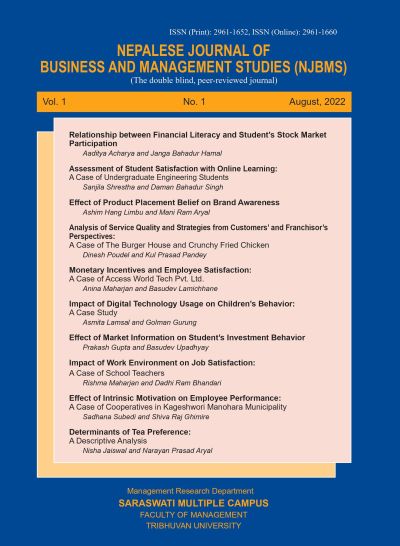Assessment of Student Satisfaction with Online Learning: A Case of Undergraduate Engineering Students
DOI:
https://doi.org/10.3126/njbms.v1i1.66168Keywords:
COVID-19, instructor performance, interaction, student satisfactionAbstract
The long-lasting and complicated pandemic situation has forced educational institutions to shift online. However, assessing learner satisfaction is extremely important for the effective implementation of online learning. This study examines factors that influence satisfaction regarding online classes during the pandemic period of COVID – 19. For this quantitative study, data were collected from 99 undergraduate engineering students of Tribhuvan University. A standardized structured questionnaire was designed to evaluate student satisfaction covering two significant predictors of students’ satisfaction; Instructor Performance and Interaction, and dissimilated through google forms. The research design embraced in the study consists of descriptive, relational, and casual research designs. And data were analyzed using SPSS using various tools such as mean, median, standard deviation, independent sample t-test, correlation, regression, etc. The findings revealed that instructor performance and interaction have a significant positive relationship and impact students’ satisfaction in an online learning environment. The study further revealed that students are not satisfied with present online learning tools and techniques. Additionally, they recommend using a new learning and problem-solving approach compared to traditional methods to make online learning less complex and more effective.
Downloads
Downloads
Published
How to Cite
Issue
Section
License
Copyright (c) 2022 Management Research Department, Saraswati Multiple Campus

This work is licensed under a Creative Commons Attribution-NonCommercial 4.0 International License.
This license enables reusers to distribute, remix, adapt, and build upon the material in any medium or format for noncommercial purposes only, and only so long as attribution is given to the creator.




